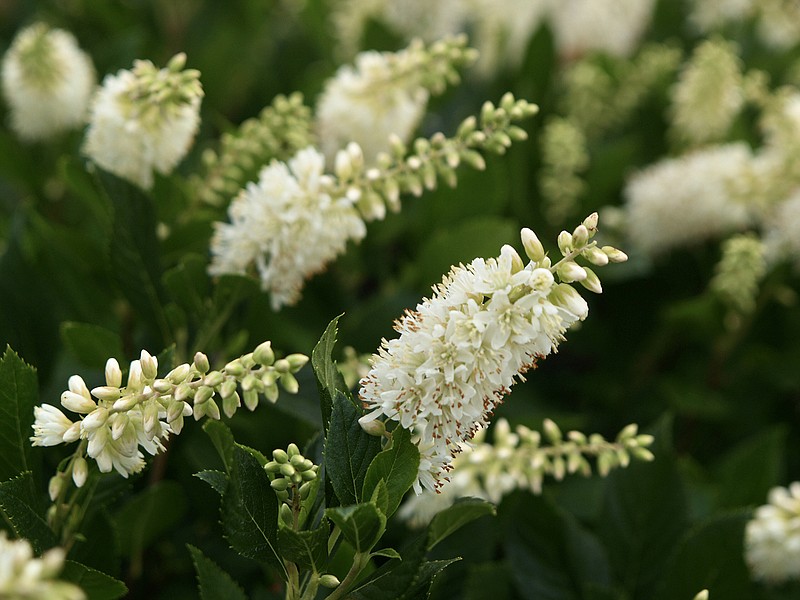Last summer as my wife, Jan, and I were relaxing on the patio, a little breeze suddenly placed us under the spell of a smell, a most tantalizing fragrance. If you have ever heard that old phrase "does your nose know what my nose knows," I can tell you her nose knows a lot more than most and she was ecstatic.
This botanical treat was coming courtesy of three Vanilla Spice clethra I had planted. I went and snipped a blooming spike so she could get to know it. This is exactly why I created the planting and her excitement had me doing the Happy Dance.
It is in a small, slightly curved bed where I partnered it with four dwarf camellias and a braided lace leaf Japanese maple that my son grew from seed. Vanilla Spice will eventually get about 5 feet tall with a 3- to 4-foot spread, perhaps a little larger. If you follow The Garden Guy, you are probably guessing I have an even greater motive than fragrance. I do!
If you aren't familiar with Clethra alnifolia, it may just delight you to know it is native from East Texas to Maine and even coastal Canada. This means it is terrifically cold hardy. The striking deep green foliage turned bright yellow at my house, which created quite the fall display with the flaming red leaves of the Japanese maple. The message on the region equates to this: If you can grow azaleas, rhododendrons or blueberries you can grow the Vanilla Spice clethra.
You may be thinking: I don't have room for that large a shrub. Don't fret as Proven Winners also offers Sugartina Crystalina. You have to love the name with the connotation of little sugar or little sweetness. This name is perfection as this fragrant botanical package only gets 3 feet tall and as wide.

Clethra is known commonly as sweet pepperbush, of which I am not so fond, and also summersweet, which I think is perfect. The flowering period lasts about six weeks. One site I saw says these fragrant spikes of blooms are similar to catnip for pollinators. This was The Garden Guy's other motive. I love that description and it is absolutely true as bees, butterflies and hummingbirds all partake of the buffet. Seeds are formed and give reference to the name pepper bush. The seeds are eaten by birds, which pretty much makes this plant on the must-have list.
The blooms have a bottlebrush-like texture offering an exotic beauty. They look as though the plants were created to be partnered with Virginia sweetspire (Itea virginica). Their growth habits seem similar as they spread a little underground. They would form an idyllic combination with purple leafed plants like Jazz Hands loropetalums.
As mentioned, it can spread or form additional clumps via underground stems. It is not hard to keep in bounds or maintained. Pruning will help you develop the desired bushy or mounding shrub look versus a thicket or briar appearance. Blooms are formed on new wood so losing flowers to late frost is typically not a concern.
The ideal location would be in a naturalistic area where it receives morning sun and afternoon shade or high shifting filtered light. The clethra is a light feeder; the best time to fertilize is in the spring with the resumption of growth using controlled release granules and perhaps a shot of liquid fertilizer in midsummer.
Now would be a great time to start sourcing your plants. Ask your garden center to get them in for you with spring shipments. This is a plant that is still sold generically but you will love Sugartina Crystalina and Vanilla Spice so don't be afraid to beat the drums. The Proven Winners website can give you direction. Once you start growing these summersweet varieties, you'll never want to be without some in the landscape.
Norman Winter, horticulturist, garden speaker and author of "Tough-as-Nails Flowers for the South" and "Captivating Combinations: Color and Style in the Garden." Follow him on Facebook @ NormanWinterTheGardenGuy.

